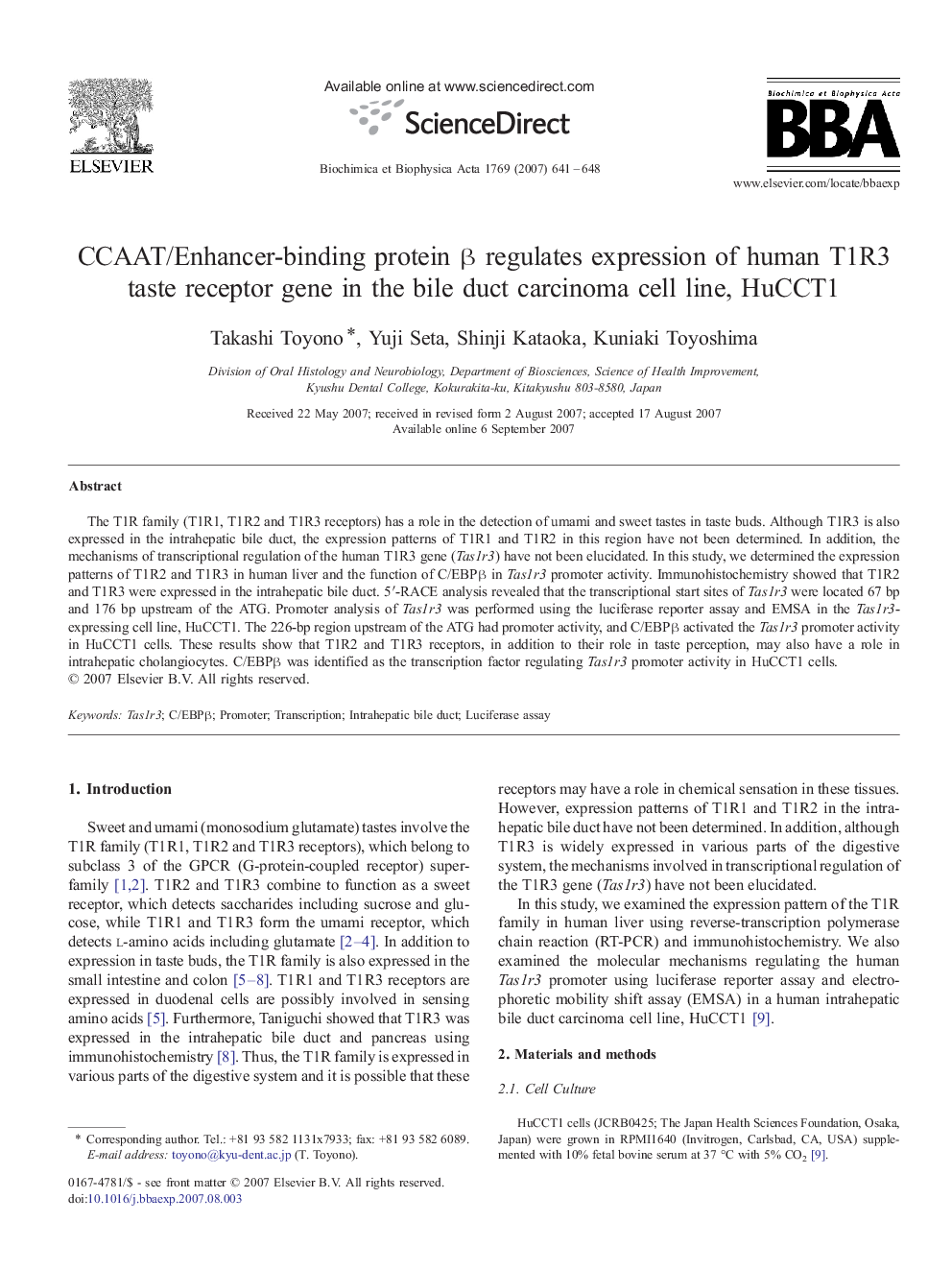| Article ID | Journal | Published Year | Pages | File Type |
|---|---|---|---|---|
| 1947090 | Biochimica et Biophysica Acta (BBA) - Gene Structure and Expression | 2007 | 8 Pages |
The T1R family (T1R1, T1R2 and T1R3 receptors) has a role in the detection of umami and sweet tastes in taste buds. Although T1R3 is also expressed in the intrahepatic bile duct, the expression patterns of T1R1 and T1R2 in this region have not been determined. In addition, the mechanisms of transcriptional regulation of the human T1R3 gene (Tas1r3) have not been elucidated. In this study, we determined the expression patterns of T1R2 and T1R3 in human liver and the function of C/EBPβ in Tas1r3 promoter activity. Immunohistochemistry showed that T1R2 and T1R3 were expressed in the intrahepatic bile duct. 5′-RACE analysis revealed that the transcriptional start sites of Tas1r3 were located 67 bp and 176 bp upstream of the ATG. Promoter analysis of Tas1r3 was performed using the luciferase reporter assay and EMSA in the Tas1r3-expressing cell line, HuCCT1. The 226-bp region upstream of the ATG had promoter activity, and C/EBPβ activated the Tas1r3 promoter activity in HuCCT1 cells. These results show that T1R2 and T1R3 receptors, in addition to their role in taste perception, may also have a role in intrahepatic cholangiocytes. C/EBPβ was identified as the transcription factor regulating Tas1r3 promoter activity in HuCCT1 cells.
